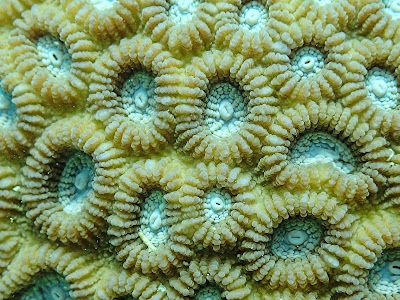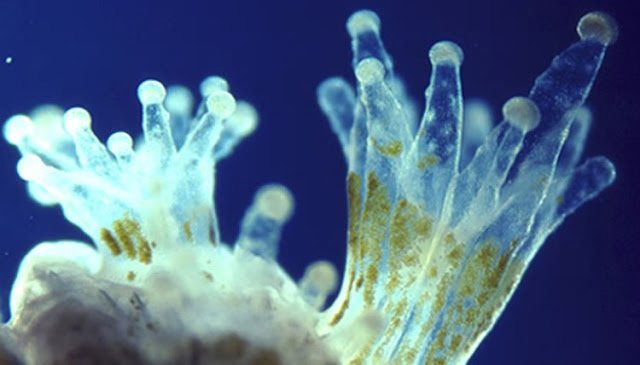A short story about corals #1
Bonzour everyone,
My name is
Léopold and I’m the new intern in the Coral nurseries project at Le Méridien
Fisherman’s Cove.
I’m 22 years old and I’m doing my
internship with the Marine Conservation Society in Seychelles (MCSS) for my
master of “Marine Biodiversity and Conservation”. I first worked on the
terrapins trapping in the South of Mahé and I joined the coral project last
week. I have to
say that it’s really nice to be in Seychelles and to participate in this
project. I used to
be a scientific mediator in the Oceanographic Museum of Monaco during the
Summer period. I remembered that it’s there, I really start to be fascinated by
corals.
The corals
occupy less than 1% of the Ocean and they are still the host of approximately 25%
of the marine worldwide biodiversity. In a simple
word, coral reefs are the underwater equivalent of the tropical rainforests. A
true hotspot of
biodiversity!
At first
sight for most of the people they just look like a strange colorful rock
surround by handsome fish, but if you start to look deeply on their surface you
will start to observe some holes named corallites. Each corallites contains a
polyp. The polyp, the coral animal, belongs to the same family as jellyfish and
anemones. If you want
to represent themselves in your mind, try just to think about a really tiny
anemone with 6,12 or even 24 tentacles for the most badass of them!!
 |
| A circle with a hole: the corallite (Photo: Chloé Pozas) |
I represent
polyps as true builders in my spirit. You don't agree?
Ok, stop
your lecture now and tell me one living animal able to build a structure that
you can see from space? From space dude!!! I’m not speaking about something you
can see from your balcony when you are watering your flowers…
 |
| Transparent polyps inside their corallites (Photo: Chloé Pozas) |
Yes,
correct, except humankind (you can start to thank the Chinese people for the
Great Wall) nobody can compete with corals in construction (the Great Barrier reef in Australia is visible from
space, even if its presence in the future is highly uncertain)
However,
corals are not really alone. Indeed, let me explain to you: they are symbiotic animals which mean they are
the result of the association between two (or sometime more) livings organisms
that benefit from the relation they have from each other.
Let’s take you
as an example, incredulous reader, you also have a symbiotic relation with
bacteria in your body. You didn’t know that? You have between 1 or 2 Kg of
bacteria in your colon and they have a massive role in the digestion process.
You gain some profit from this weird relation as the bacteria in your body. And
we are still at our first stammering in this field of Science, but let’s come
back on our favourite subject: corals.
Photosynthetic
algae named “Zooxanthellae” live
inside the polyps. Corals basically act like plants during the day, the energy
is brought to the coral via the photosynthesis (this complex process you learn
in Life Science class, remember?) thank to these small algae.
 |
| A close-up photograph of a transparent polyp showing the symbiotic algae "zooxanthellae" living inside its tissue (Photo from www.ocean.si.edu) |
During the
night, mostly the polyps are out and capture planktons or other particles with
their awesome tentacles. But no lie to you! The majority of the energy come
from the “zooxanthellae” and her
incredible power named: photosynthesis.
However,
polyps are not so lazy, they are still bringing carbon dioxide to the
microscopic algae and other inorganic nutrients necessary to her development. There is no
waste in this process, everything is perfectly used. Another amazing cycle as
Mother nature always accustomed us! But wait, are we not fruits of nature too?
To be
continued…
Your humble
servant Léopold


Comments
Post a Comment